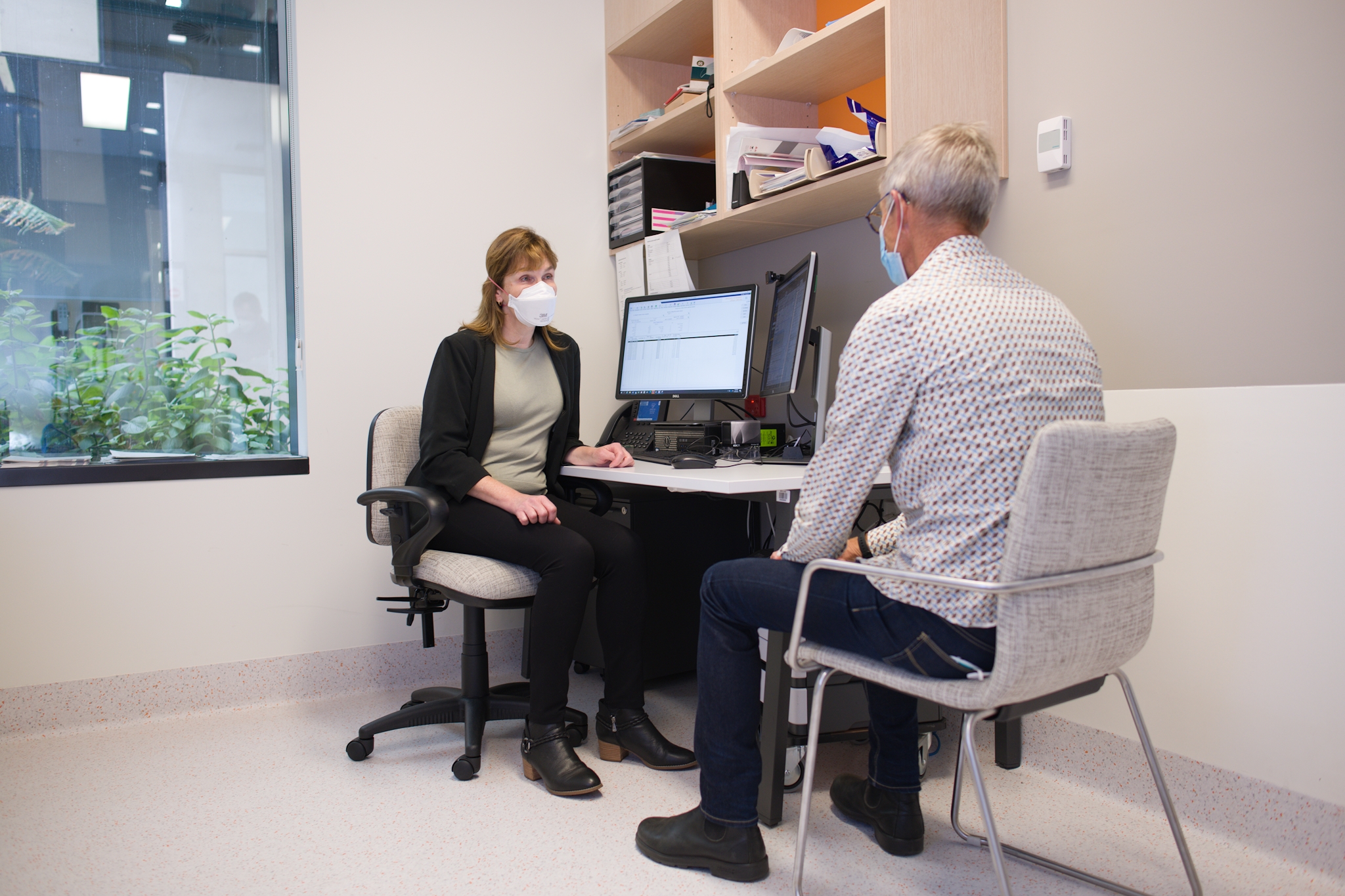This page provides information on the management of symptoms. Cancer and its treatment can affect each person differently and cause various symptoms and side effects. Most symptoms and side effects can be relieved, and some can even be prevented. Talk to your treating team about any symptoms or side effects that you experience as they can suggest ways to manage them.

Pain is one of the most common side effects for people with CUP.
Patients often report that their pain comes in waves, meaning it comes and goes. Pain also depends on how large the cancer is and the location/s of the cancer in your body, as tumours pressing against and putting pressure on nerves can cause pain.
Talk to your treating team regularly and proactively as your experience of pain will change throughout your cancer journey. It’s better to take your pain medicine regularly, rather than waiting for the pain to occur, as it will help keep the pain managed. You may need to use a combination of methods to effectively relieve your pain. It may take time and trial and error to find the right pain-control measure for you.
Medical options for relieving pain:
Pain management specialists
Your treating team will be able to recommend medicine or treatment to help manage your pain, but if you are still experiencing pain, you can ask for a referral to a pain management or palliative care specialist. These specialists may be able to provide additional specific support around how to best manage your pain. They will often ask how the pain feels, where it is being felt and how it is affecting your life so they will know how to best support you. Talk to your treating team regularly and proactively as your experience of pain will change throughout your cancer journey. It’s better to take your pain medicine regularly, rather than waiting for the pain to occur, as it will help manage the level of pain.
Non medical options for relieving pain:
You might like to consider non-medical pain options to relieve cancer or treatment pains.
They can include supportive allied health services such as physiotherapy or occupational therapy.
Some methods are simple, and can be incorporated into your daily routine, such as stretching, using ice or hot packs. Others are complementary therapies such as massage, acupuncture and yoga. These therapies are not part of standard care for cancer as some lack scientific evidence, but they sometimes can be used alongside conventional treatments. Speak to your doctor before engaging with any of these to ensure they are right for you.
Further Information about managing your pain:
Managing Pain for Advanced Cancer | Cancer Council NSW
Managing pain | Living Well After Cancer | Cancer Council NSW
Non-medical ways to Manage Pain | American Cancer Society

For many people, extreme and constant tiredness (fatigue) can be one of the most difficult symptoms to manage. It can be very distressing, both for the person experiencing it and for those around them witnessing their loved one struggling. Tiredness or lack of energy can be caused by a range of factors, such as:
Tips for managing fatigue

Lack of appetite
A decreased appetite is a common experience for individuals with CUP, often stemming from the stress associated with diagnosis and treatment. The treatment one receives may also change the way food smells or tastes, which can contribute to nausea or discomfort.
Periods of reduced appetite can be short term (a few days or weeks) or be ongoing. When you are feeling this way, speak to your treating team as this can often be managed.
Tips for when you don’t feel like eating
Nausea
Feeling nauseous (sick in the stomach) can be a symptom that is caused by cancer or a side effect from cancer treatments.
Nausea can be caused by:
Tips for easing nausea

People with CUP can experience shortness of breath and this can be for a variety of reasons. Some causes of breathlessness include:
Treatment will be dependent on the cause of breathlessness. You may need a small procedure called a pleural tap to drain fluid from the chest or an ascitic tap to drain fluid from the abdomen.
Tips to help your breathing

Patients may experience lymphoedema due to a blockage in the lymphatic system which prevents fluid in that area from draining properly and leading to a buildup of fluid. Lymphoedema is characterised by swelling, typically in the arms or legs but it can be in other parts of the body too.
The main causes of lymphoedema are:
Practical strategies for managing lymphoedema focus on reducing swelling and improving drainage fluid.
Tips to help with lymphoedema
Here are the links to other information pages to learn more about different aspects of supportive care. You may also use the quick links on the right side of the page to navigate.

Most people are diagnosed with cancer of unknown primary (CUP) after they have symptoms or become unwell. Some people may be diagnosed during tests for another health condition. When cancer is suspected, you might be referred for tests or to a specialist.

The treatment you have depends on a number of things, including where the cancer is and your general health. A team of doctors and other professionals discuss the best treatment and care for you. The main treatment for Cancer of Unknown Primary is cancer drugs, most commonly chemotherapy. You may also have radiotherapy to help to control your symptoms and hormone therapy.




